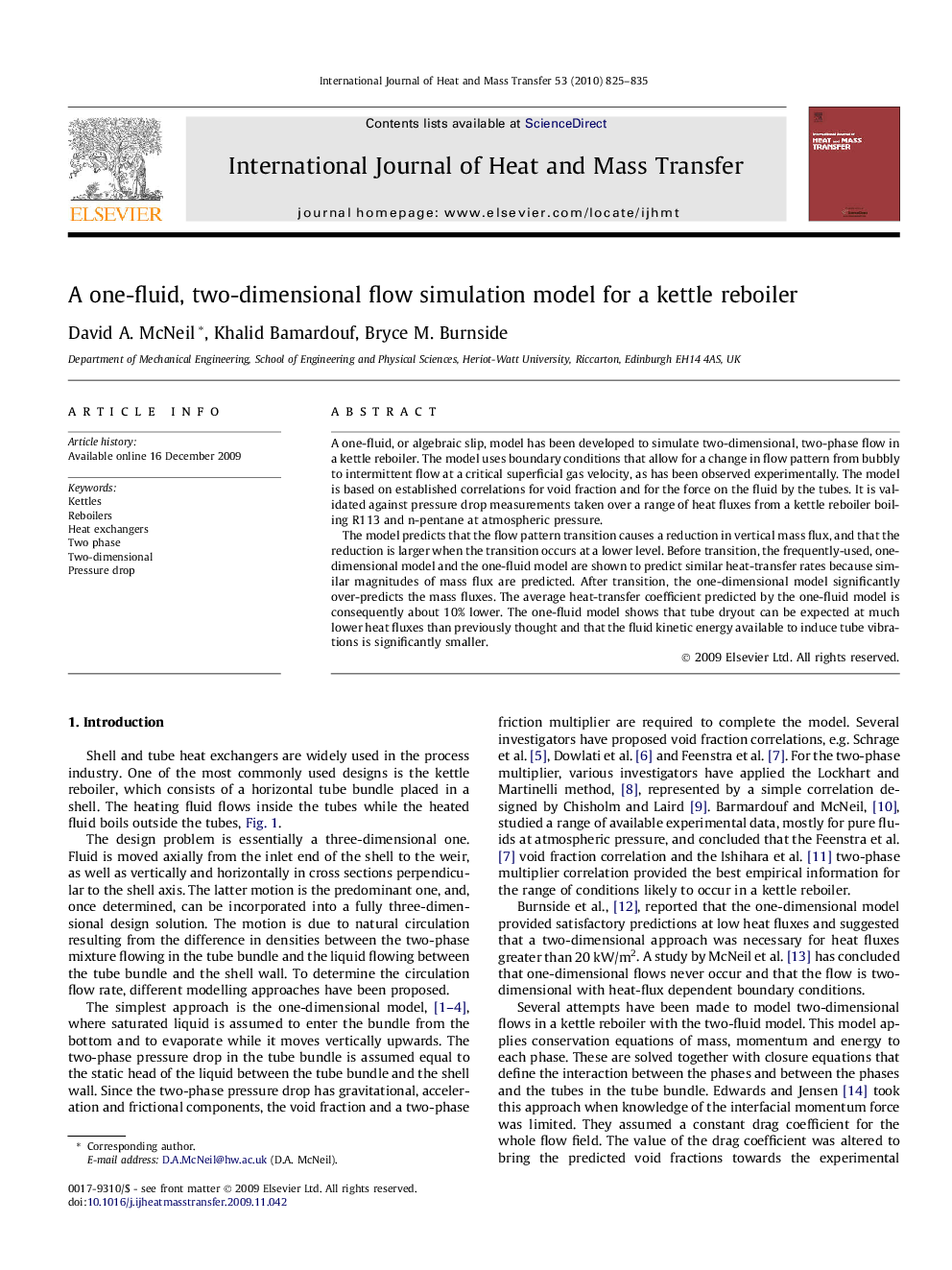| Article ID | Journal | Published Year | Pages | File Type |
|---|---|---|---|---|
| 658837 | International Journal of Heat and Mass Transfer | 2010 | 11 Pages |
Abstract
The model predicts that the flow pattern transition causes a reduction in vertical mass flux, and that the reduction is larger when the transition occurs at a lower level. Before transition, the frequently-used, one-dimensional model and the one-fluid model are shown to predict similar heat-transfer rates because similar magnitudes of mass flux are predicted. After transition, the one-dimensional model significantly over-predicts the mass fluxes. The average heat-transfer coefficient predicted by the one-fluid model is consequently about 10% lower. The one-fluid model shows that tube dryout can be expected at much lower heat fluxes than previously thought and that the fluid kinetic energy available to induce tube vibrations is significantly smaller.
Related Topics
Physical Sciences and Engineering
Chemical Engineering
Fluid Flow and Transfer Processes
Authors
David A. McNeil, Khalid Bamardouf, Bryce M. Burnside,
